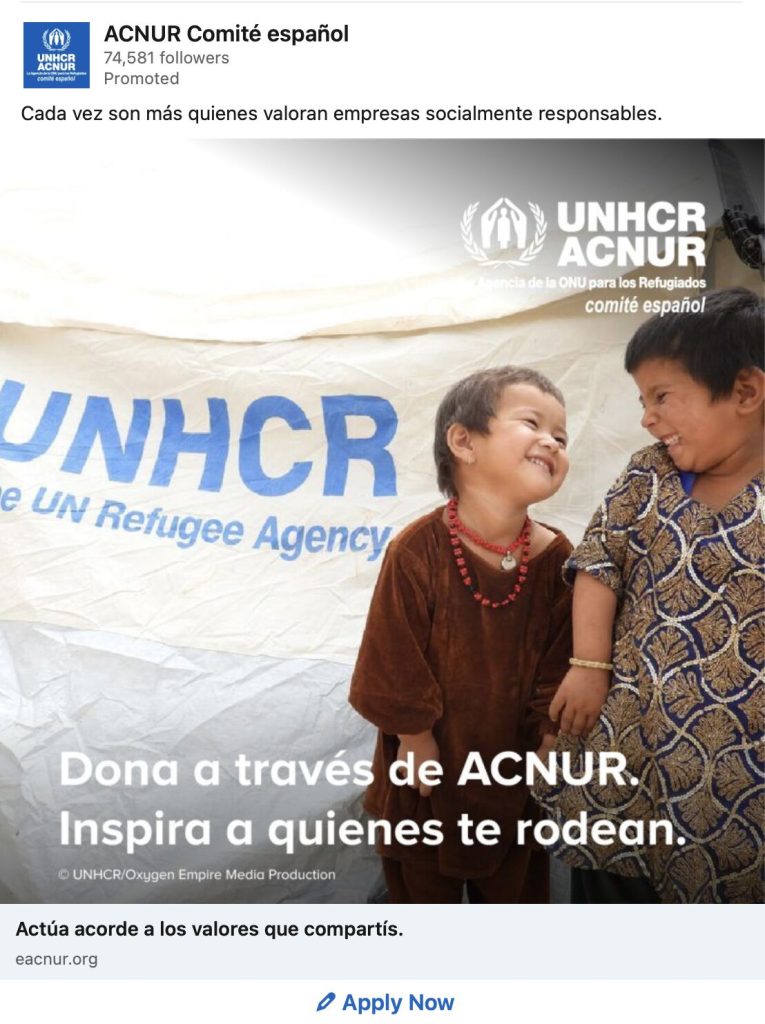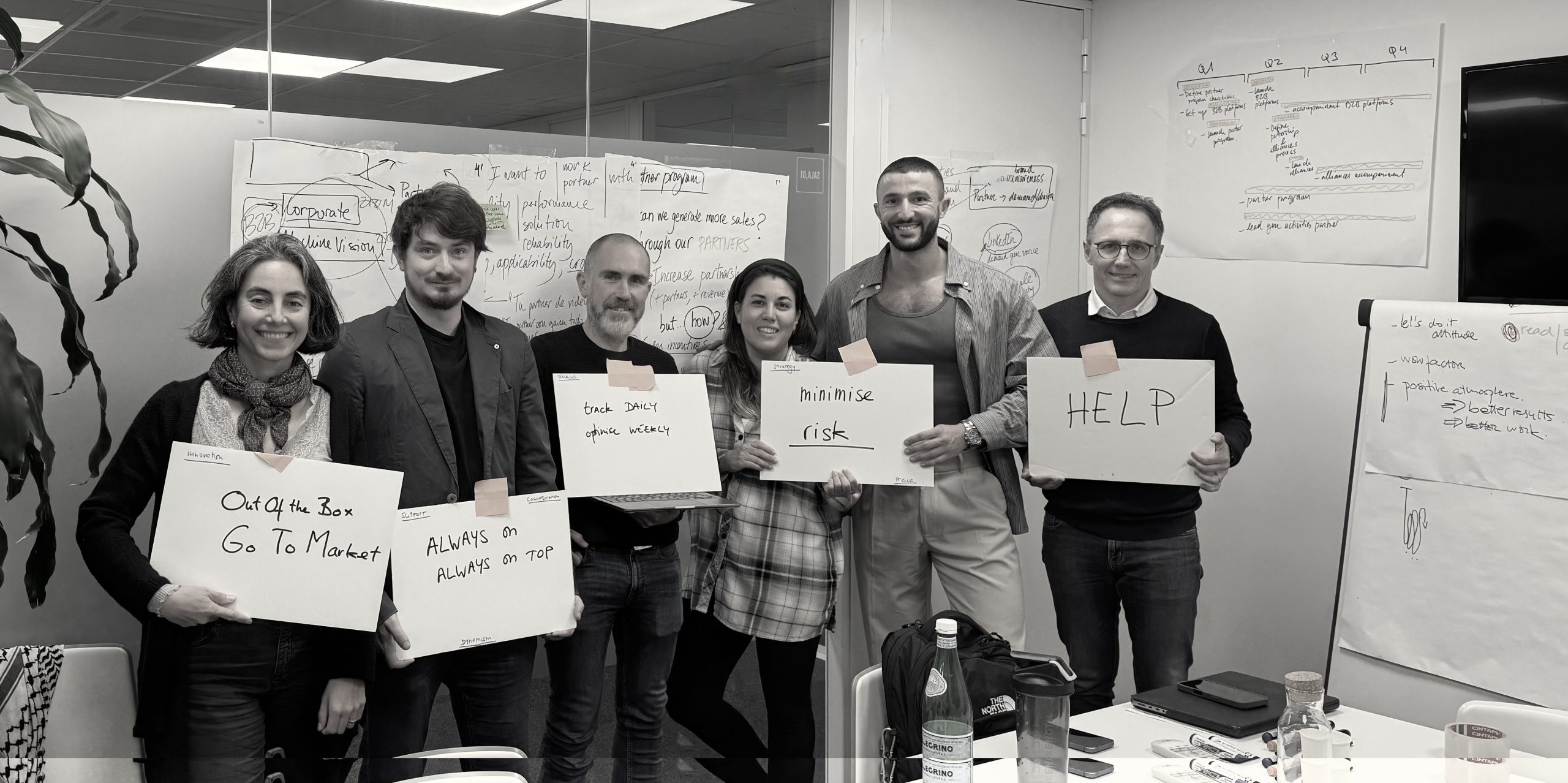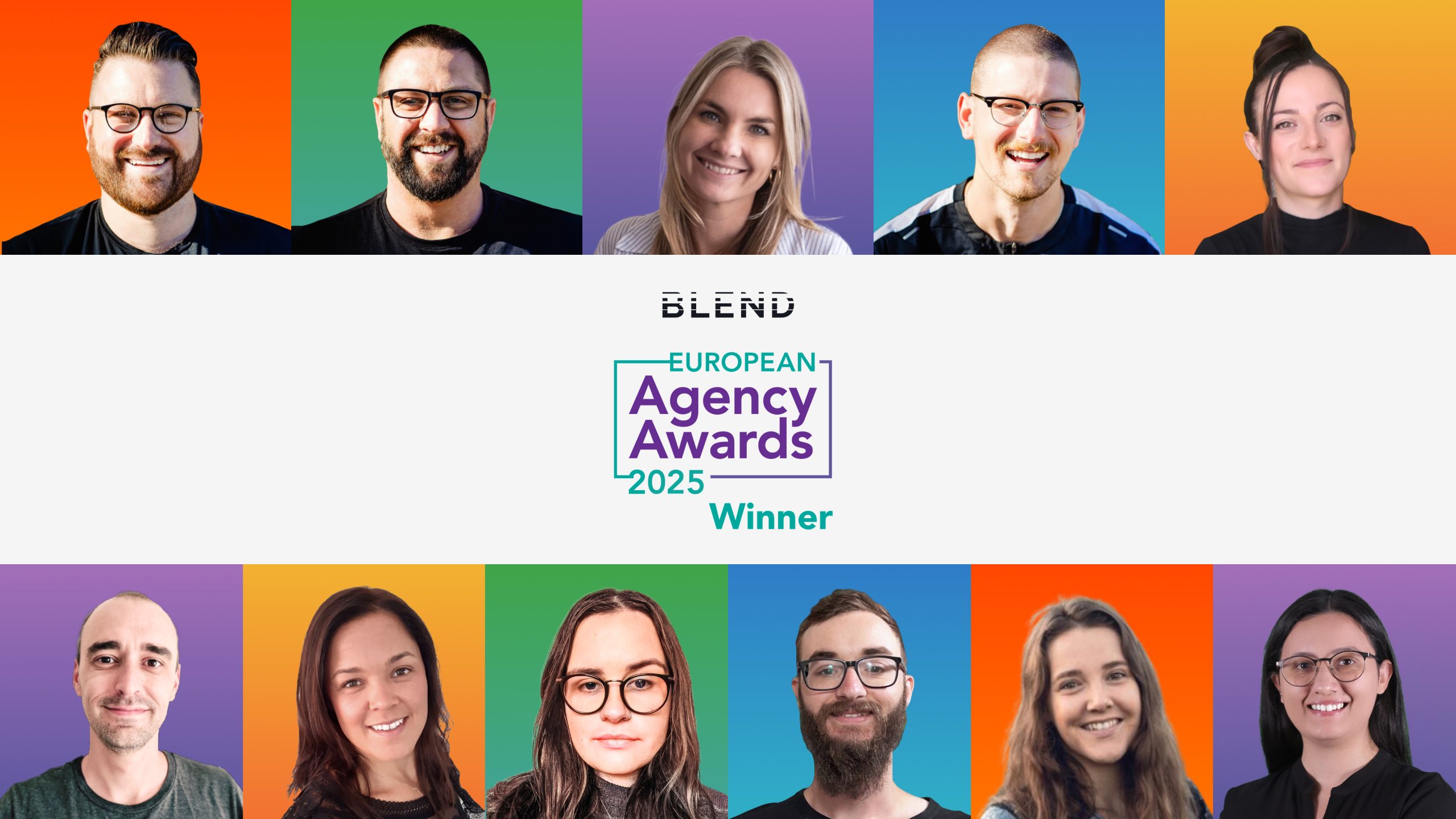Gotoclient shares their case study.
Two years ago, we had a conversation that added a huge amount of impact to what Gotoclient does.
We sat in front of the donations team at UNHCR Spain and shared our radical belief: that B2B marketing tools (LinkedIn Ads, lead generation funnels, conversion optimization) could transform how NGOs connect with their most committed corporate donors.
ACNUR was curious but cautious. And honestly, so were we. After all, LinkedIn Ads were built for companies, and not for non-profits. But after two years of determination , collaboration, and planning, ACNUR took the challenge onboard.
What happened next didn’t just exceed our expectations. It proved that when you dare to challenge convention with purpose and precision, you can create something that changes the game entirely.
The courage to question everything
For decades, NGOs have relied on emotional charity to build awareness, but also to convert. And emotion works. But it did not take onboard the business decision makers’ pain points and headaches. What if we could combine that emotion with their own challenges? What if the same platforms driving business growth could also drive social good?
The challenge was immense. LinkedIn Ads had never been used by an NGO to target corporate donors at the decision stage. There was no playbook, no benchmark, no proof of concept. Just belief. And the courage.
With a modest media budget over five months, we set our goal: to generate dozens of qualified corporate leads that ACNUR could nurture into long-term partnerships.
Some people thought we were crazy. After all, why would business leaders on LinkedIn, scrolling through industry updates and job postings, stop to consider a humanitarian cause?
Finding the human behind the title
We didn’t target businesses. We targeted the founders, partners, and directors whose personal values shape their company’s decisions. In SMEs especially, the choice to give isn’t delegated to a CSR department. It’s made from the heart.
Our targeting strategy was surgical: senior decision-makers in companies with 51 to 200 employees, focused on entrepreneurship and leadership roles. As data came in, we refined relentlessly, cutting underperforming segments, optimizing creative, making every euro work harder for the cause.
But targeting was only half the equation. We needed to understand what truly moved these leaders.
We studied four emotional pain points:
- Lack of visible internal purpose
- Talent loss due to weak social values
- The personal feeling of “I’m not doing enough”
- Fear of inaction in uncertain times
The message that resonated most powerfully? Talent loss. The risk of losing your best people because your company doesn’t stand for something greater than profit.
This became the heart of our storytelling. And our most successful creative was disarmingly simple: close-up portraits of children smiling directly at the camera. No corporate polish. No slick production. Just human connection.

Turning emotion into strategy
Once we captured attention, we needed to convert it. But we couldn’t just ask for donations. These were business leaders trained to evaluate ROI, to weigh decisions, to think strategically.
So we created a LinkedIn Document Ad offering an exclusive guide: “The Social Impact and Footprint of Corporate Giving.”
This wasn’t just lead bait. It was a fundamental reframe. The guide positioned corporate donation not as charity, but as a business asset with measurable returns: enhanced reputation, improved talent retention, stronger internal culture, competitive differentiation.
To download it, users completed a Lead Gen Form. Curiosity became intent. Intent became qualified leads.
The results? An 11.7% conversion rate, well above LinkedIn’s benchmarks. We had successfully transformed emotion into strategic action.
The reverse funnel that changed everything
Here’s where we got counterintuitive. Traditional marketing wisdom says: start with awareness, build consideration, drive action. We flipped it.
We built a reverse funnel, starting from the bottom (action) and working our way up. Instead of spending months building brand awareness, we went straight to decision-makers ready to act.
And it worked. So well, in fact, that ACNUR asked us to expand the campaign to larger corporations.
We pivoted quickly, targeting CSR and sustainability leaders through skills-based segmentation. We replaced “Entrepreneurship” with keywords like “Corporate Social Responsibility,” “Sustainability,” and “Philanthropy.”
What began as a lead generation campaign evolved into something bigger: a movement uniting SMBs and large corporations under a shared purpose.
When the numbers tell a story
Dozens of qualified leads in 5 months, exceeding our goal. Average cost per lead under B2B’s most competitive segments. A CTR, outperforming LinkedIn’s 2025 average and a CPC well below benchmark levels.
But the numbers only tell part of the story.
We proved that performance marketing and philanthropy aren’t opposites; they’re allies. We proved that when you speak to business leaders in their language (ROI, reputation, retention), you unlock generosity that lasts.
What we learned about courage and collaboration
This campaign taught us lessons that go far beyond marketing tactics:
- Trust is the foundation of innovation. the UNHCR took a massive risk trusting us with an approach that had never been tried. Without that trust, none of this would have been possible.
- Emotion and logic need each other. We started thinking logic would move people. We were wrong. Logic alone falls flat. But emotion without strategy fades quickly. The magic happened when we combined both.
- Purpose is powerful when it’s personal. Generic messages about “making a difference” don’t move the needle. But helping a business leader see how giving connects to their personal values and business goals? That creates momentum.
- The best campaigns evolve. We didn’t get it perfect on day one. We refined, pivoted, optimised. The campaign’s success came from our willingness to learn and adapt in real time.
- Small teams can create big impact. You don’t need massive budgets or huge agencies to do groundbreaking work. You need belief, rigor, and the courage to try something new.

What this means to us
Jordi Marca, Gotoclient’s CEO and Founder: “For years, I had believed it was possible to help NGOs (or a government, this is the United Nations!) from a business & “client”-centric approach. Having mapped out and articulated the campaign around the real business pain points, such great results for the UNHCR have been one of the proudest moments of my career. Not only because helping refugees is the right thing to do, but also because nonprofits can take a big leap by becoming more business-centric. That is real purpose and real impact.”
Ollín Rafael Valenzuela, Responsible of the SMEs Programme and Strategic Alliances: “Gotoclient combines extensive expertise in investment tools, a thorough and data-driven analytical approach, and a creative mindset when addressing emerging challenges. This collaboration has allowed us to establish a solid foundation for a highly effective digital acquisition structure targeting companies and foundations.”
For our team, this project represents countless strategy sessions, late-night optimizations, and moments of doubt. It represents the courage to pitch an untested idea and the trust ACNUR placed in us to pioneer something new.
But most of all, it represents proof that marketing done right can change lives.
The beginning, not the end
This campaign isn’t the endpoint. It’s the beginning of a new model for NGO growth.
For other NGOs watching, here’s our message: you don’t have to choose between heart and strategy. You don’t have to settle for traditional approaches just because “that’s how it’s always been done.”
B2B tools aren’t just for businesses. Performance marketing isn’t at odds with purpose. When you understand people deeply, when you combine emotional insight with strategic clarity, when you have the courage to try something new, you can create change that lasts.
That’s what we learned. That’s what we proved. And that’s what we hope inspires others to take their own leaps.






